I don’t watch a lot of movies, for various reasons, but one side effect of this is that I’m not influenced by the common associations created by such. I’m not spooked by dark, quiet forests at night, and I find nothing at all mysterious or foreboding about fog; it’s pretty damn cool, in fact. I’m still watching for conditions that I got one night decades ago, when we had a very thick low-lying fog on a night of a full moon, which illuminated the fog into a movie set. I was walking through a field and couldn’t see what was more that five meters away through the glow. Wonderful experience, with little chance of getting lost since the field was bordered by country roads and a treeline, so our human inability to walk a straight line without visual cues wasn’t much of an issue (plus it’s probably a lot better when you have a few meters visibility rather than totally blindfolded,) so when I emerged onto the road I wasn’t where I’d aimed to be but not horrendously far off either.
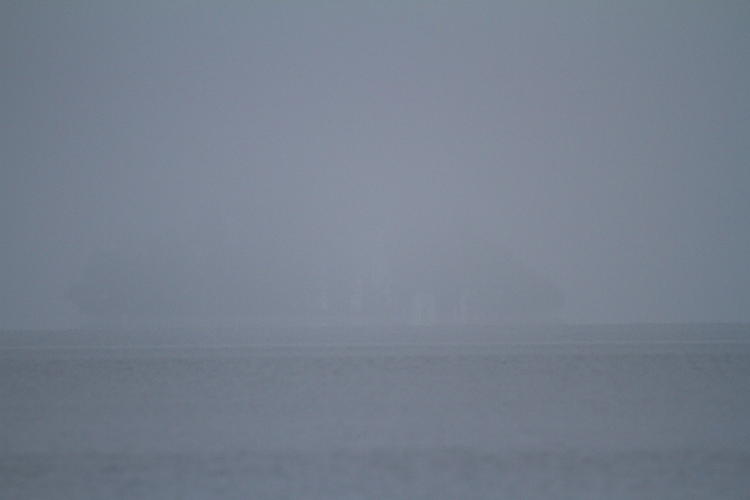
So when we had a nice fog over Jordan lake during a “sunrise” outing, it didn’t ruin anything nor make things spooky at all, it just reduced sight distance and added a different mood to the photos. The fog wasn’t terribly thick but it was persistent, lasting for hours after sunrise (thus the title – why? What did you think it meant?), so just to illustrate, I did a few frames of a distant subject. Unless you were looking hard initially, you might never have realized it was there, since the image above is at 600mm, and the horizon line was pretty indistinct. 45 minutes later it was now noticeable.
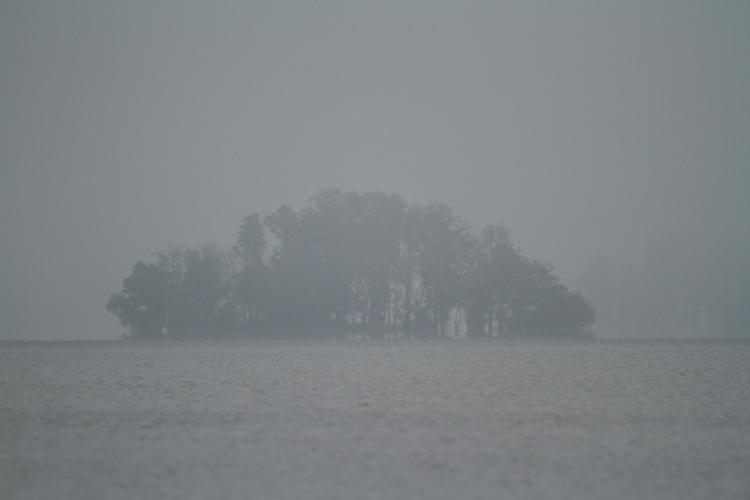
Now distinct enough not to be mysterious, it was 80 minutes after sunrise, and not even the sun was visible. It’s worth noting that, while I estimated the island as being better than a kilometer off, it was actually 2.5 – not exactly close. Another 45 minutes, and now the fog was just a haze over the horizon, with more detail to be seen.
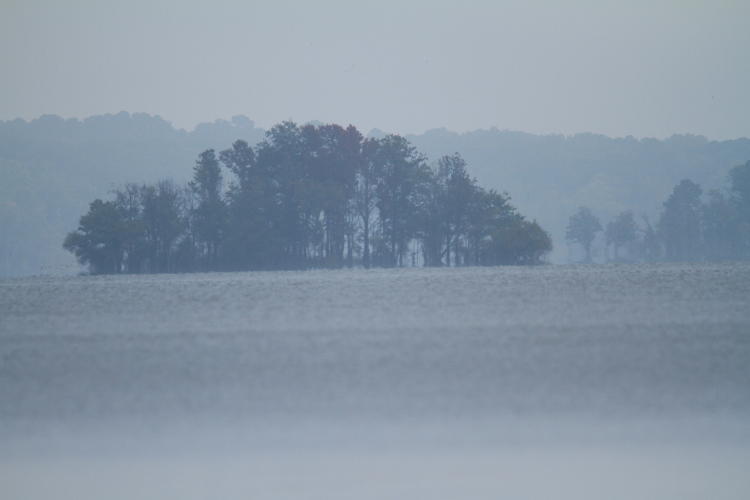
I like how the background horizon, the far shore of the lake, gains definition as we go along. At this point, the sun made its first appearance, but only fleetingly for a while, sometimes so briefly it was difficult to focus upon (autofocus was out entirely, too little contrast for the sensor to define, so manual it was.)

But while all this was going on, the visibility in the immediate surroundings was only slightly reduced, so not much of an impediment to photography. Had the fall colors been more advanced, it could have made for some much better landscapes, but we still have about a month to go on that end.
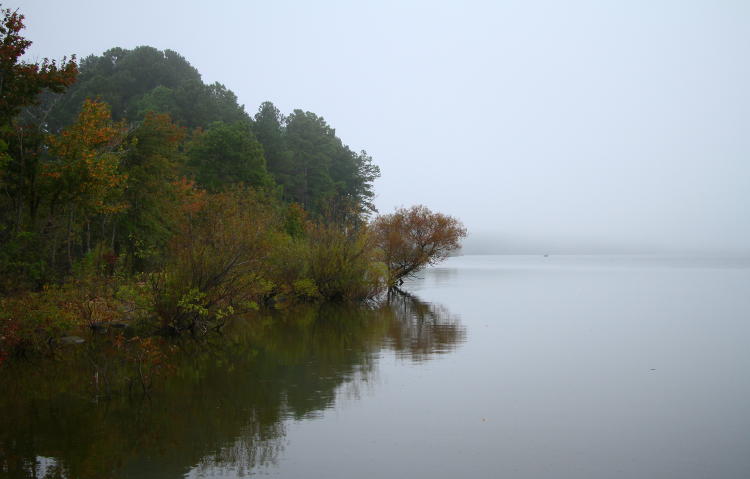
The birds were still present and active – not remarkably so, but there were some opportunities to snag a few photos here and there. The herons and egrets were maintaining their distance, so it was the osprey that formed the primary subjects of the early morning.
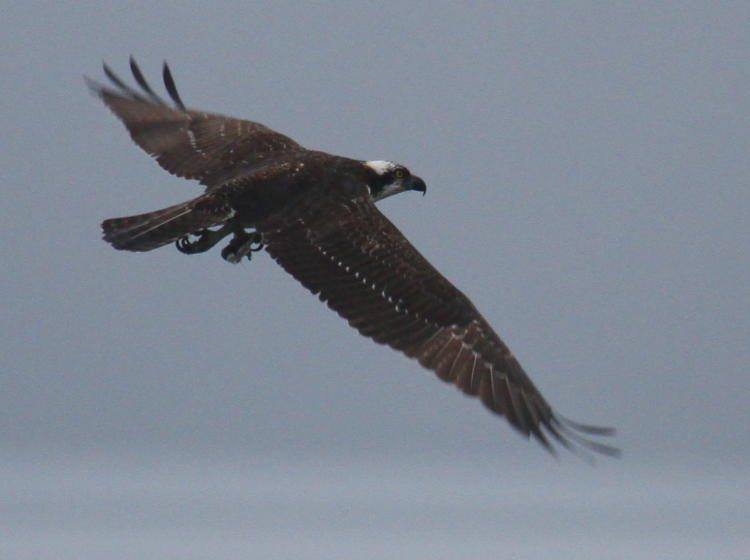
There are a couple of different approaches to nature photography. Ours is to go out in potentially productive areas and see what can be found, anywhere, and I often espouse this approach because, on the whole, it nets you a lot more photos for any given outing, plus it provides more variety. But there are two specific detriments to doing this: it requires a lot more lens changing (which, in the field, introduces more dust and junk into the camera and lenses,) and it means you’re trying to look everywhere instead of watching one area intently for all activity – which, admittedly, can be very boring if your chosen subject is scarce. The ‘everything’ approach meant, in this case, that we didn’t see the osprey (Pandion haliaetus) until it was just completing its dive after prey, and could only catch it as it lifted off with a fish.
Slightly luckier the next time around, but only slightly. We were watching this osprey as it wheeled and started its dive, but the distance was greater and I, for one, hadn’t dialed the exposure compensation back in for aerial shots, allowing the sky to set the ‘mid-range’ exposure which was a little darker than ideal, so the following shot has been tweaked a little in brightness and contrast to show the details I’m illustrating.

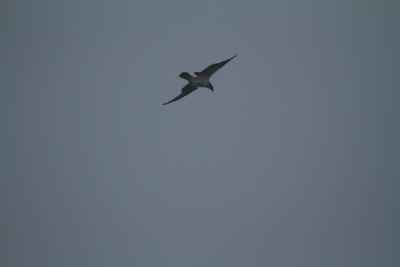 What I’m showing above are the ruffled feathers, at the forward wing edges and the base of the tail, which indicate that the osprey has stopped soaring and has angled the wings to ‘stall,’ eliminating nearly all lift to simply drop from the sky – it will realign the wings in the stoop to aim precisely (or pull out as needed if the fish disappears.) Video still remains a possibility, but that will almost certainly be from a tripod and will take place on a much clearer day than this one.
What I’m showing above are the ruffled feathers, at the forward wing edges and the base of the tail, which indicate that the osprey has stopped soaring and has angled the wings to ‘stall,’ eliminating nearly all lift to simply drop from the sky – it will realign the wings in the stoop to aim precisely (or pull out as needed if the fish disappears.) Video still remains a possibility, but that will almost certainly be from a tripod and will take place on a much clearer day than this one.
Meanwhile, at left is what the original, full-frame image looked like, so you know both the exposure and the amount of enlargement to see the details; this is at 550mm focal length, so the osprey was fairly distant.
Worse, however, was that as it completed its dive, it dropped behind a tiny tree from my perspective, so even as I tracked it (and the autofocus did its random thing and failed to at times,) I couldn’t catch the impact with the water. So what I was left with was the eventual departure of the osprey as it went someplace to consume its meal. But you gotta like those visible fins at least.
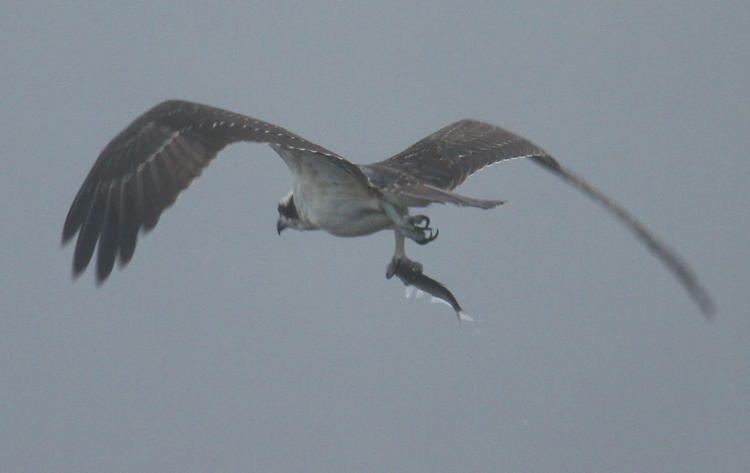
The next photos are just a few that I got of other subjects while the fog was denser, and the first was confusing even to me after I unloaded the memory card, until I looked close and remembered what I’d been shooting at the time.
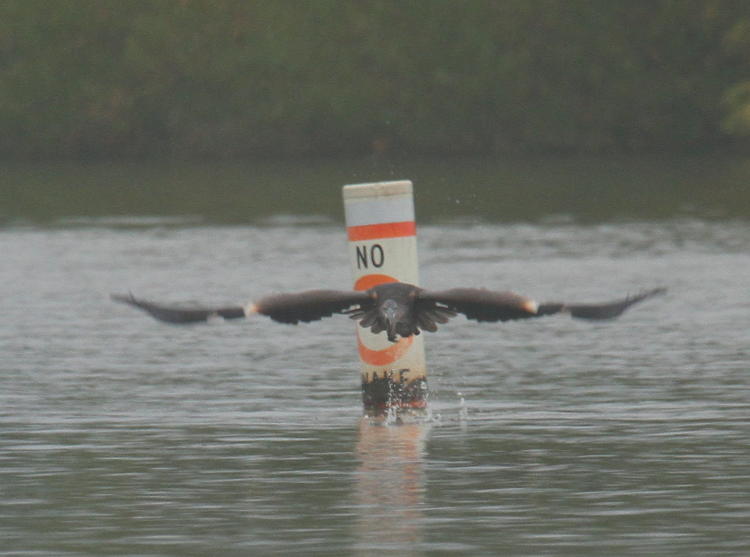
 We never see them from this perspective, and the fog reduced the resolution and contrast a bit to make it harder, but above is a great blue heron (Ardea herodias) that has just launched from that marker buoy and is flying directly towards the camera – you can just see the head, appearing tiny from this angle, but those wings look great, even if they appear to have armbands. The splash came from the wingtips, I believe, during the first flap, but on occasion you’ll see a fish jump as a low-flying bird passes over, not to try and eat the bird, but because they mistake it for a much-closer insect. Still pretty sure it was the wings though.
We never see them from this perspective, and the fog reduced the resolution and contrast a bit to make it harder, but above is a great blue heron (Ardea herodias) that has just launched from that marker buoy and is flying directly towards the camera – you can just see the head, appearing tiny from this angle, but those wings look great, even if they appear to have armbands. The splash came from the wingtips, I believe, during the first flap, but on occasion you’ll see a fish jump as a low-flying bird passes over, not to try and eat the bird, but because they mistake it for a much-closer insect. Still pretty sure it was the wings though.
At right is a pair of great egrets (Ardea alba) that had this nice mirror image thing at the moment that I tripped the shutter, but alas, autofocus hadn’t locked onto them and the shutter speed was still a little slow from the low light, so this is as large as it’s worth displaying here. It gets better.
We left that area pretty much the same time as the fog was clearing, so we had much better light for the next ones, only a kilometer away on another portion of the same lake. We got glimpses of osprey and great blue herons, not well enough to produce decent photos, but some black vultures (Coragyps atratus) were working over a very old fish carcass within easy view so, hey…
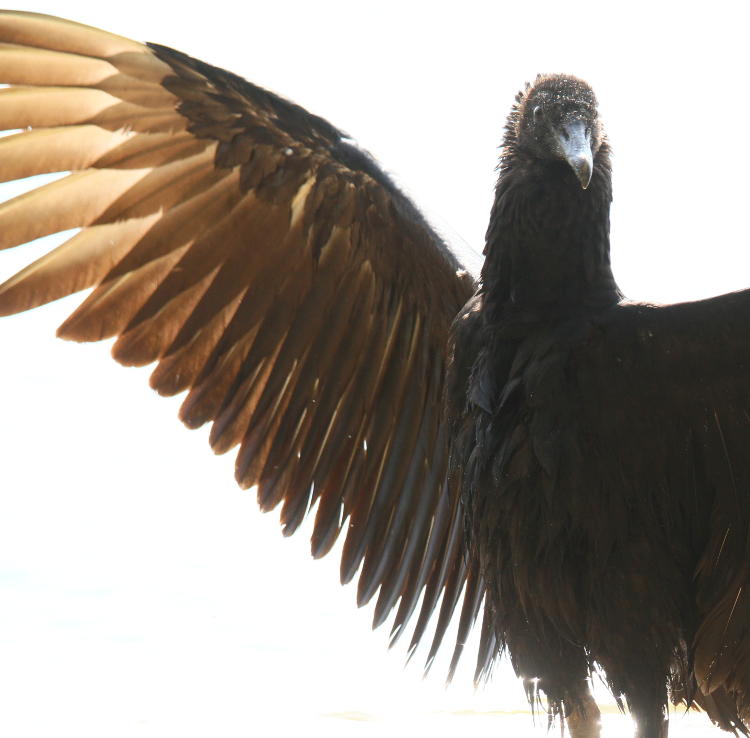
We got treated to this raised wings display as we drew closer, instead of the bird flying off, and I’m not sure if it was intended as a threat display or to mark dibs on the carcass. The sun, now bright, was shining off of the water directly behind the vulture, so while I’d remembered the exposure compensation, there’s only so much it could do, especially with an all-black bird. But at least I captured some facial details.
A little later on as we switched position and got slightly better lighting, another pair joined the first and did the same display; if it was a threat, the first wasn’t impressed. One of the new ones did eventually get a quick snack from the fish, but there were no squabbles.
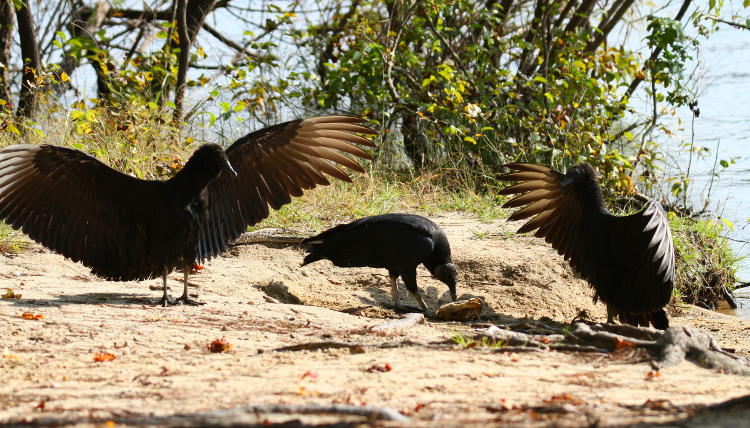
Who knows, this could simply be how vultures provide fine dining ambience, their equivalent of some tableside music as two vultures share the same strand of intestines.
No, I’m not sorry I put that image in your head. You know I enjoy doing this.
But a tad earlier, as I was demonstrating using a tree for cover as a method to stalk closer to a subject, the first one gave a great expression just as I was ducking back behind the tree, so we have half a frame, but still a cool one.

Again, not sure if this was a reaction to seeing me closer or simply a yawn, but I wish I’d gotten a clearer shot if it. The raised feathers on the back of the head provide this startled impression, though they’re always like that. And feel free to tell everyone that you’ve now seen a vulture’s brown eye…
Moving on.
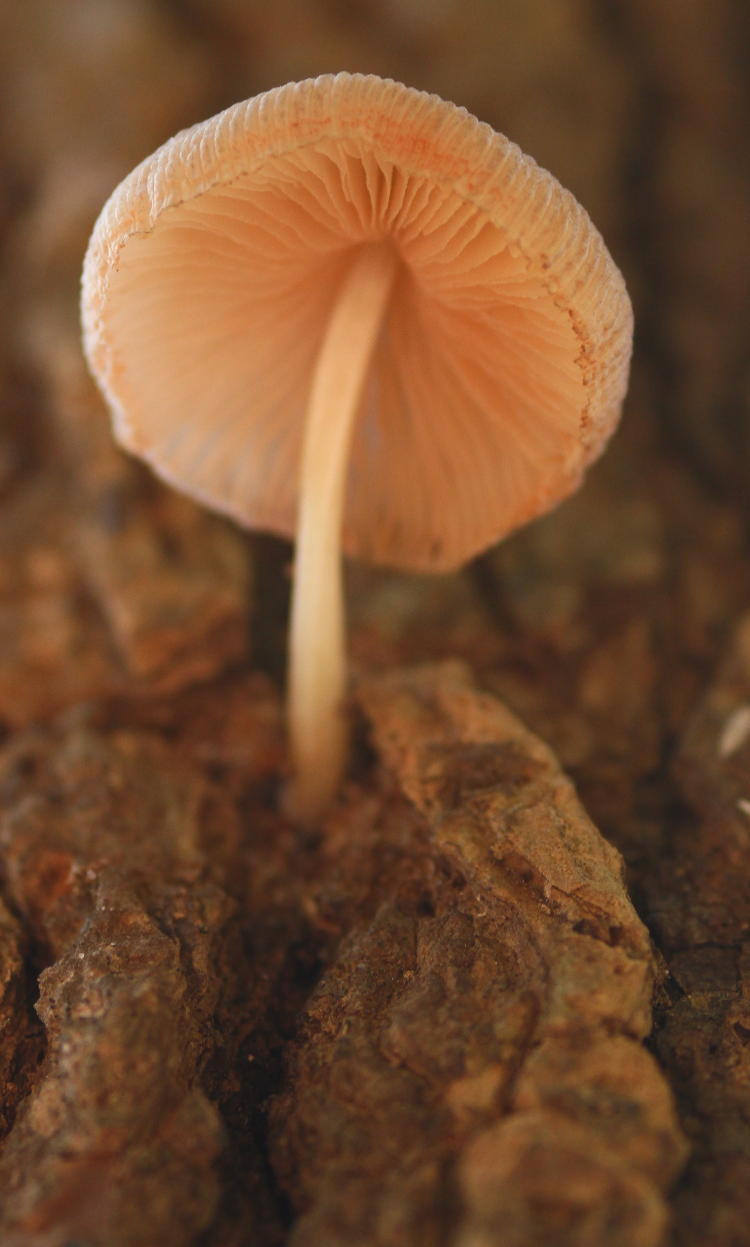
Buggato has this habit of claiming possession of photo subjects, so just to annoy him I claimed this mushroom as mine, because I liked how it sprouted directly from the bark of a healthy tree, all alone. Again, this was almost directly into the sun, so my left hand is blocking the light from hitting the lens. Disrespectfully, Mr Bugg still attempted to photograph it, but knew better than to post it on his blog. Not to mention that I know he didn’t get the best angles on it.
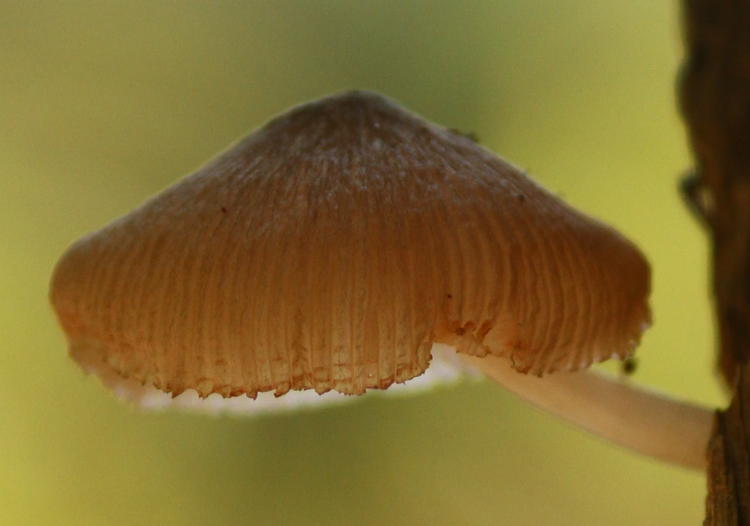
The sunlight was directly illuminating the far side of the cap, which provided both backlighting and a halo for the details on the shadowed side. freehand at f4 with the Mamiya 80mm macro, the depth-of-field was very short but the edge is sharp, so it works for me.
The birds weren’t doing any hunting on this side, and we’d exhausted the possibilities of the vultures (not a long list, there,) so we started stalking a slightly distant great egret along the shoreline. We had much better luck than anticipated.
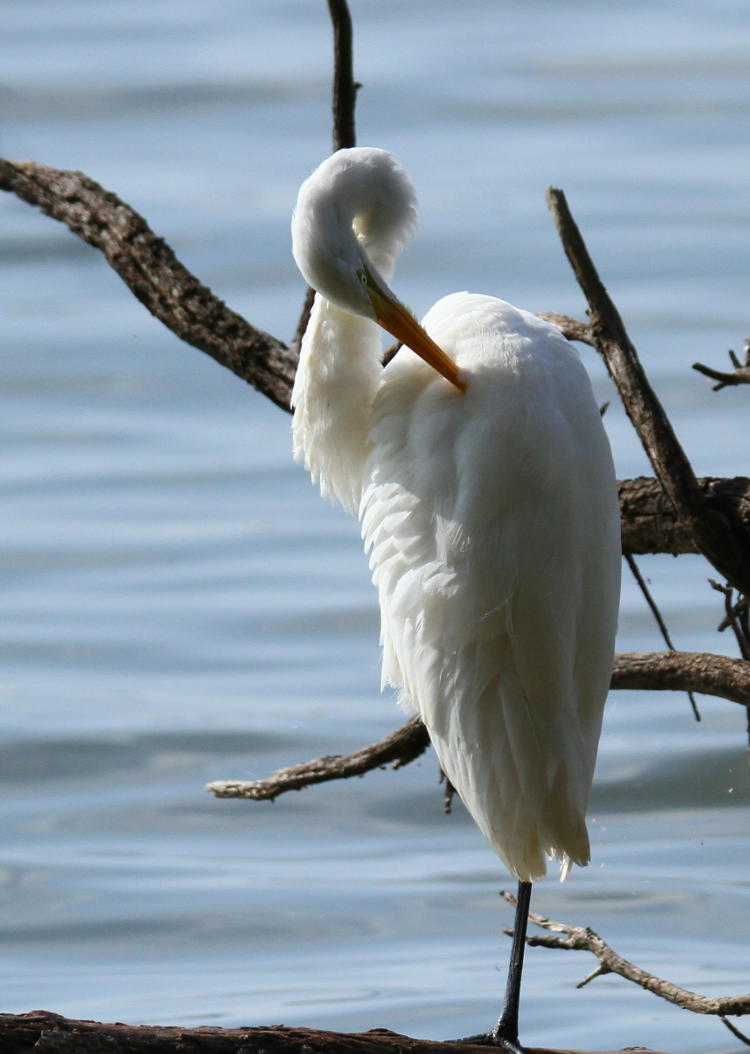
We had mixed light as we approached, the now-bright sun was sidelighting the egret, who watched us during our slow casual stalking but wasn’t terribly concerned. It ambled up and down its perch, occasionally giving us great light angles, and flew off once (predictably) but (unpredictably) didn’t go five meters to another perch, hardly an escape from us.
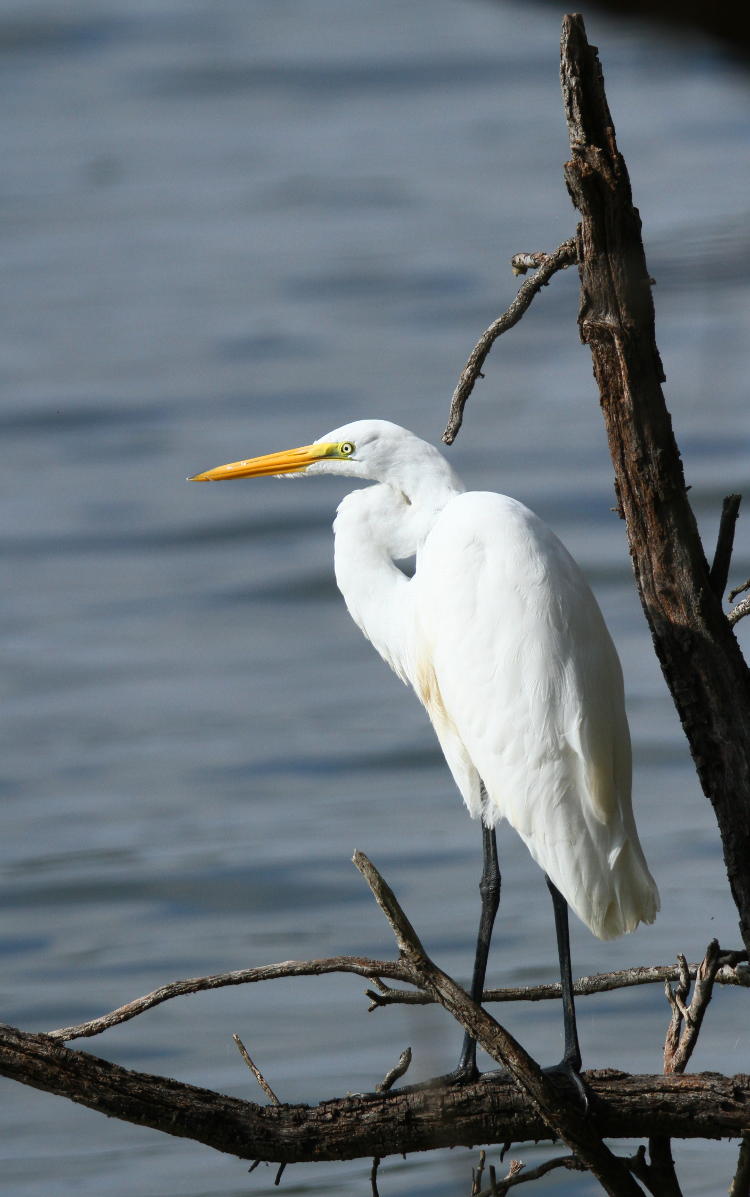
This was pretty unprecedented, since the egrets and the herons, in this area at least, like to maintain a little safe distance and generally you can’t approach within fifteen meters, but at our closest we got to about seven, I think. A few days later I did even better, but that’s a topic for another post.
And to show how stressed and anxious it was over our presence, we have this image of it industriously scratching its neck.
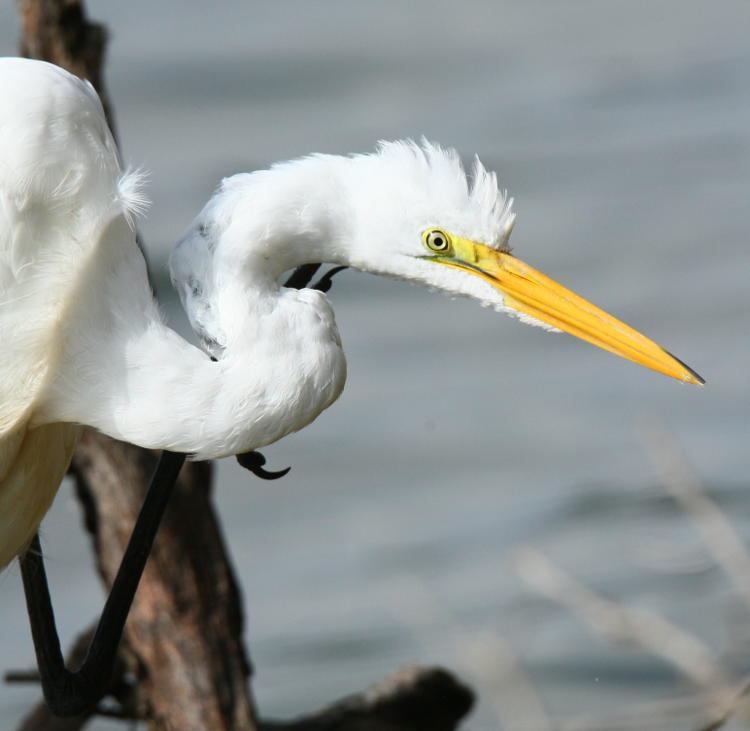
Of course, this might simply have been a signal to the bodyguards (birdyguards) to close in on the subjects getting too close – I didn’t think of this at the time, or check for laser dots.
But that was the last of the birds and we still had a little time left, so we began exploring the wildflowers near the parking lot (we were close to one of the boat ramp areas on the lake.) This netted another variety of subjects in just a few minutes.
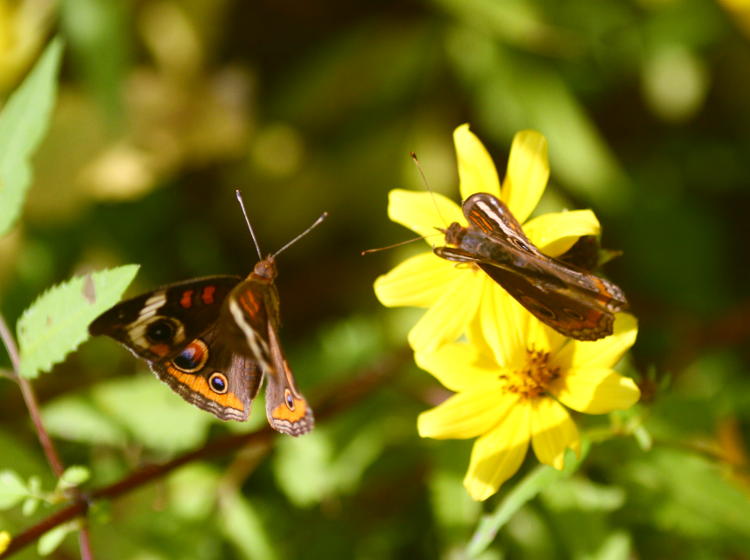
The pollinators were having a field day (er, well, yeah) on the late wildflowers, none more noticeable than the common buckeyes (Junonia coenia.) One in particular was perched firmly on a single blossom, appearing to feed but I couldn’t be sure, while another repeatedly circled it and dodged in; I just fired off a sequence of frames.
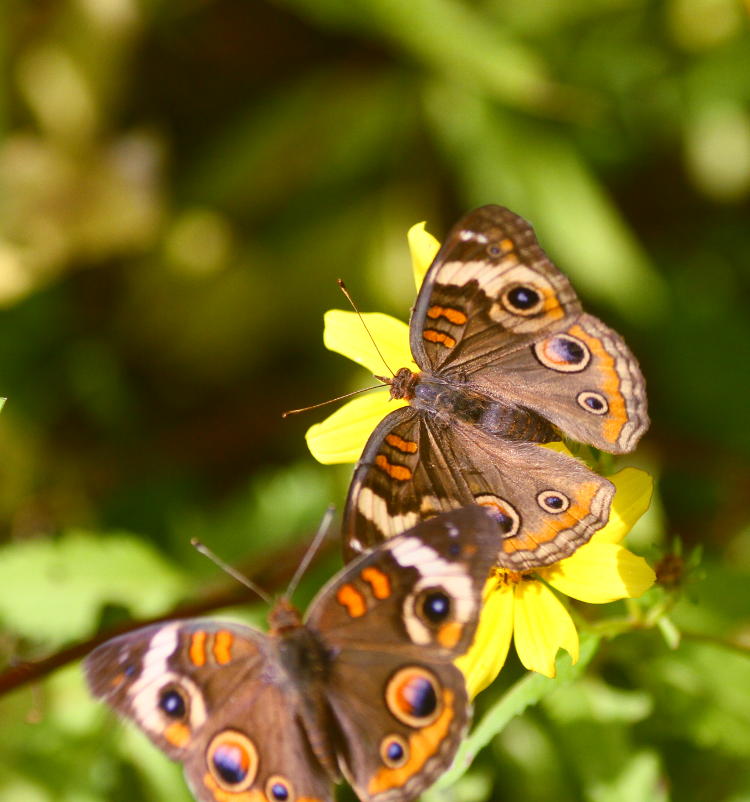
What the purpose of this was, I couldn’t say – seems kind of late in the season for mating behavior, but it’s also late for flowers, so who knows? I just takes them, as I may have said before. But the buckeyes certainly have nice color patterns, with some subtle blues/lavenders in there, provided you can get them to hold still long enough to catch them with their wings down.
The patch was also laden with juvenile green treefrogs. Mr Bugg was still calling out dibs on subjects, so I was polite and did not make claims of any kind on the frogs, but he still hasn’t posted any – maybe he’s going to do a comprehensive gallery later on. So I’ll go with just a couple that I caught.

Without looking close, this one might escape attention as simply a leaf or a burl, but of course, nature photographers would recognize it instantly. I tried shifting the vine that was casting the shadow on its back, but the vine was firmly anchored to neighboring plants and I was disturbing too much, plus Buggato was coming over and I didn’t want to, you know, chase off the subject before he could get it, so I let it be. The thicket was too dense to get around to a portrait angle, but I had better luck with the next one.
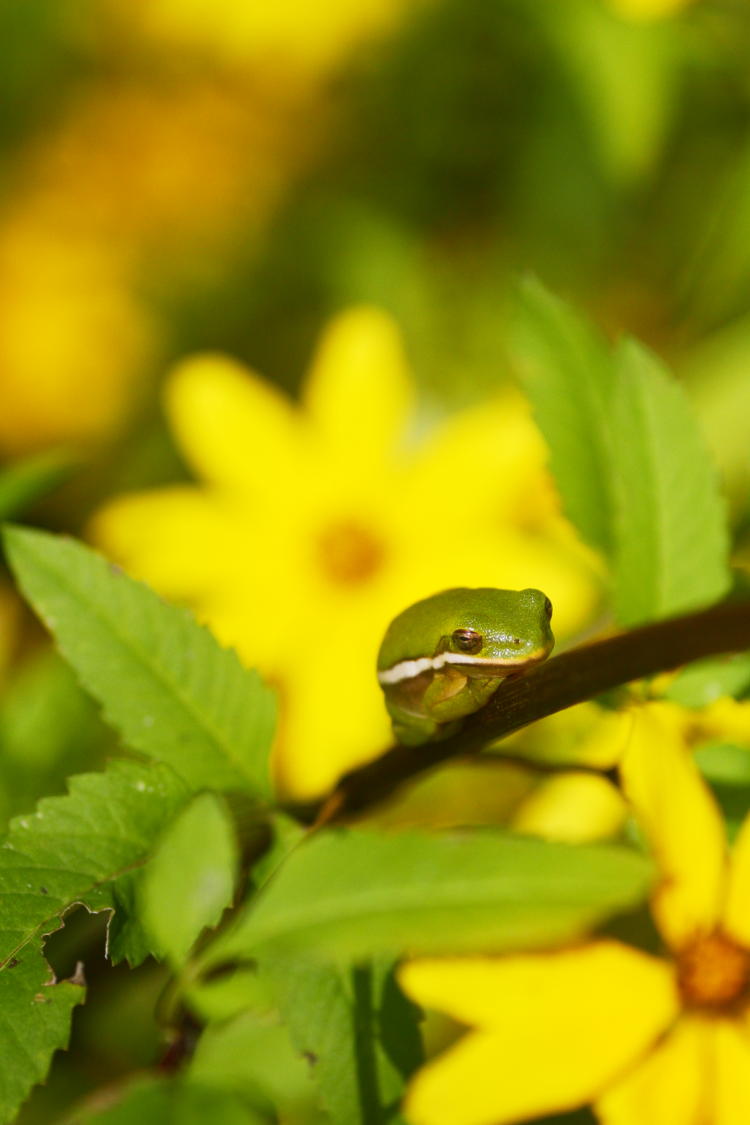
All that we saw were juveniles, about half of adult length, so definitely this year’s brood. They don’t like getting too hot and you can see the slitted pupil on this one, but until just over an hour before the whole region was fogged in, albeit lightly, so they likely hadn’t found the need to seek shadows then, and hadn’t yet been aroused to it. Within an hour, I’m betting there would have been none in plain sight.
So, not too shabby for a single session, with a nice mix of conditions. And it means I’m almost caught up; I have a handful of photos from yesterday to feature, but that won’t happen until late tonight at least, more likely tomorrow afternoon – who knows what I might add before then? Might never actually catch up…




















































